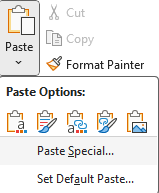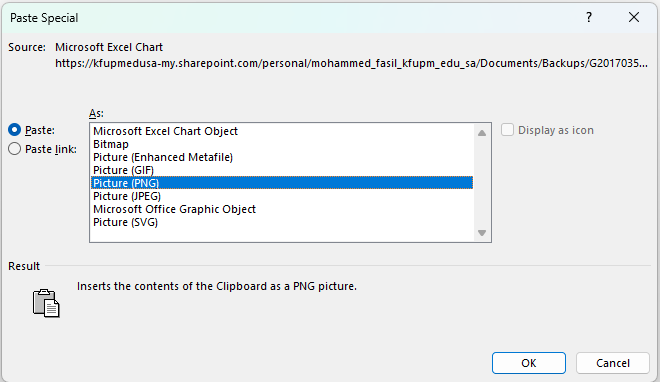Guide for Authors
The Editorial Board of Journal of Undergraduate Research International sets rigorous guidelines for article selection and acceptance. These ethical and technical standards help authors prepare and submit their research while ensuring consistency, quality, and responsible scholarly publishing.
Authors' contributions should present novel empirical, theoretical, or analytical research, providing a detailed account of the current state of knowledge, methodologies, research processes, results, and conclusions. All submissions must be original, unpublished work and must not be under consideration elsewhere at the same time. Authors bear full responsibility for the content and integrity of their scientific papers. The corresponding author, acting on behalf of all contributors, must disclose any financial or personal relationships with individuals or organizations that could potentially influence their work.
The Editorial Board reserves the right to reject any scientific text without giving substantiation, if it is thematically unsuited, lacks quality, presents the results incorrectly, or for any reason related to the scientific content.
Authors' contributions should present novel empirical, theoretical, or analytical research, providing a detailed account of the current state of knowledge, methodologies, research processes, results, and conclusions. All submissions must be original, unpublished work and must not be under consideration elsewhere at the same time. Authors bear full responsibility for the content and integrity of their scientific papers. The corresponding author, acting on behalf of all contributors, must disclose any financial or personal relationships with individuals or organizations that could potentially influence their work.
The Editorial Board reserves the right to reject any scientific text without giving substantiation, if it is thematically unsuited, lacks quality, presents the results incorrectly, or for any reason related to the scientific content.
Types of Contribution
The journal accepts "Original Articles" as the only type of contribution (at this stage). An original article presents the results of novel research, whether empirical, theoretical, technical, or analytical in nature. It should provide a comprehensive overview of the current state of knowledge, research methodology, research process, findings, and conclusions, making them accessible to a broad audience. Additionally, the article must include references to relevant literature, including both cited sources and general or polemical texts.
Ethical Considerations
- Author’s must adhere to the journal’s Research Ethics Policy.
- Disclose any financial or personal conflicts of interest.
- Ensure data accuracy, originality, and proper citation to avoid plagiarism.
- Although JURI primarily focuses on research outside the domains of human and animal studies, any submitted paper involving such subjects must adhere to ethical standards and obtain the necessary institutional approvals.
Manuscript Preparation
- Language: The publication language is English.
- Submission Process: Papers must be submitted online via this Editorial System (Click here to start submission); no submission fees apply.
- File Format: Submissions should be in Word format following the journal's template (Click here).
- Figures and Tables: All figures and tables must be embedded within the text, not submitted separately.
- For defining the roles of authors and mentor, please see Authorship Guidelines under Authorship policy.
- Length: Submissions should not exceed 15 pages.
- Supplementary Material: If a paper exceeds the page limit, the Journal of Undergraduate Research encourages authors to include supplementary material relevant to the content.
- Supplementary material provides additional content that supports a research paper but is not included in the main text.
- It is a separate file from the main paper.
- Supplementary material allows authors to provide additional details, while the main paper includes only the most essential information.
- The supplementary material file should begin with the title of the paper, authors, and affiliations.
- It may include data files, extra figures, detailed experimental explanations, computer codes, extended models, or any other relevant supporting details.
Manuscript Structure
- Title: The title should be concise, informative and reflect the study’s core
- Abstract: The abstract should not exceed 250 words, summarizing the study’s objectives, methods, key results and conclusions.
- Keywords: Provide a maximum of 4-8 technically precise keywords that accurately reflect the core concepts, methodologies and scope of the research.
- Introduction: Clearly state the research objectives and establish the scientific context by providing a detailed background of the study while avoiding extensive literature reviews or summarizing the study’s results.
- Literature Review / Related Work: Present a review of the previous studies related to the proposed work and the research gap found in the literature that derived the author to conduct this research.
- Methodology: Clearly provide a concise description of the research subject, design, tools and procedures.
- Result and Discussion: Presents the result of the conducted experimental or theoretical studies, summarizes the key findings with critical analysis, along with the provision of insights into the importance of the results considering the latest global scientific achievements.
- Conclusions: Concise summary of the research results, limitations of the study, and suggestions for future work.
- Acknowledgments: Acknowledge contributors and disclose funding sources (if any).
Figures, Tables and Equations
- Figures (including charts, photographs, diagrams, maps etc.): Provide high-quality original figures with concise and short captions below the figures. The figures should be numbered using Arabic numerals (e.g., Fig.1).
- Specialized software, such as SigmaPlot or Origin, is highly recommended. Exported figures should have a resolution between 300 and 600 dpi.
- Tables: The table’s title should be clear and concise and placed above the table, and numbered using Arabic numerals (e.g., Table 1).
- The figures should be designed by the authors without being adopted from any other source to avoid potential copyright infringements associated with using content from external sources.
- Reference to figures and tables in the text should be in the format (Fig.4, Table 1.).
- Mathematical equations: The mathematical equations should be provided as editable text and not images, center justified, numbered consecutively in parentheses (e.g., (1), (2)), and right justified.
- Units: The unit of measurements should be in accordance with the International System of Units (SI).
Instructions to paste high-quality graphs in Word document from Excel
- Step 1: In the Excel file, right-click on the desired graph and click “Copy”; or press Ctrl+C.
- Step 2: In the Word document, in the Clipboard ribbon:
- Paste → Paste Special
- Select PNG/SVG → Click OK.


References
- The author must use Nature citation style for both in-text citations and the reference list.
Conflicts of Interest and Financial Disclosure
- The corresponding author must disclose all potential conflicts of interest.
- Financial support must be clearly acknowledged
Submission and Review Process
- Manuscripts undergo a rigorous peer-review process.
- Authors may suggest potential reviewers but should avoid conflicts of interest.
We process personal data collected when visiting the website. The function of obtaining information about users and their behavior is carried out by voluntarily entered information in forms and saving cookies in end devices. Data, including cookies, are used to provide services, improve the user experience and to analyze the traffic in accordance with the Privacy policy. Data are also collected and processed by Google Analytics tool (more).
You can change cookies settings in your browser. Restricted use of cookies in the browser configuration may affect some functionalities of the website.
You can change cookies settings in your browser. Restricted use of cookies in the browser configuration may affect some functionalities of the website.

